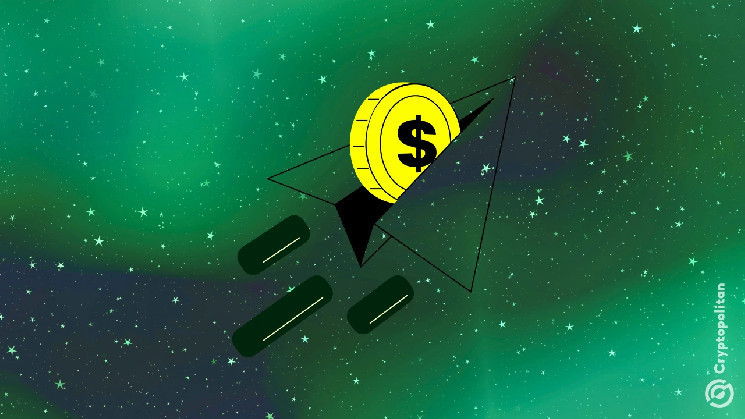
According to data from X on-chain data analytics platform, Lookonchain, the total stablecoins inflows on Ethereum and Solana over the past seven days have increased significantly. Lookonchain revealed that Ethereum received about $1.1 billion in inflows, while Solana received about $202 million, mostly from USDC and USDT.
Ethereum network’s stablecoin netflows this week increased from last week’s outflows of over $63 million to the current $1.1 billion inflows. However, Solana’s inflows over the past seven days are still over $200 million lower than what it experienced the week before.
Lookonchain data revealed that Solana recorded over $424 million in USDC and USDT inflows in the previous week.
The on-chain data analytics platform also noted a general increase in stablecoin inflows on other chains, including TON, Avalanche, and Polygon. TON recorded about $22 million in inflows. Avalanche, Hyperliquid, Polygon, Base, Noble, BNB Chain, SUI, and Near Protocol recorded over $83 million, $54 million, $43 million, $30 million, $16 million, $9 million, $3.6 million, and $3.3 million in inflows, respectively.
Arbitrum and Optimism experienced the most significant outflows over the past seven days. Arbitrum shed over $2 billion in stablecoins, while Optimism shed over $14 million. Aptos also had a significant outflow over the past seven days, recording over $3 million in stablecoin value.
Stablecoins have seen growth since Trump’s presidential win
Solana added about $1b in major stablecoins over the last month, mostly driven by USDC expansion pic.twitter.com/qPDzGZIQXX
— Dan Smith (@smyyguy) December 31, 2024
Coingecko data shows that the total stablecoin value locked in blockchains by December 31 for USDC and USDT stood at $44 billion and $137 billion, respectively.
More data from Tie Terminal also revealed an increase in stablecoin value on Ethereum Layer 2 chains in December, hitting over $13.5 billion. Solana and Ethereum further recorded over $1 billion each in stablecoin inflows in December. For Solana, the inflows in December amounted to over 12% in value growth on the chain.
A U.S. bank Citibank report has attributed the recent growth to the incoming U.S. president Donald Trump’s win in the November elections. Citibank further revealed that USDT, USD Coin, and DAI had recorded over $25 billion in growth since Trump’s win. The analysis also suggested that the growth mirrored the crypto community’s hope that President-elect Trump will benefit the crypto market.
Another Bloomberg report suggested that stablecoins will go mainstream this year. The report suggested that the 205 billion-dollar industry is seeing more adoption as it offers a safer investment option.
KPMG Japan’s Director of Financial Services Kenji Hoki’s statement from September 2024 also suggested that stablecoins could go mainstream in the next 6 to 12 months.
On January 5, the founding engineer of Aptos Labs shared a similar opinion on X, saying that stablecoins will experience a parabolic rise in 2025. The Aptos Labs engineer also revealed significant growth in daily stablecoin transaction volumes since the beginning of the year, hovering around 4x more since January 1.
Changes in regulations will boost stablecoins adoption
A Bloomberg report from December 28 revealed increased interest by global banks in stablecoins, which could also fuel the current growth. Banks like the French Société Générale and the London-based Revolut have been exploring stablecoins.
Société Générale’s blockchain and crypto department, the Société Générale-Forge, introduced a Euro-backed stablecoin, the EUR CoinVertible (EURCV), in April last year. The European financial group ODDO BHF SCA is also exploring a Euro-backed stablecoin.
The report revealed the recent interest by banks resulted from the regulatory clarity created by the European Union. Many EU countries are planning to implement the Markets in Crypto-Assets Regulations (MiCA) to create a more uniform environment for crypto markets. MiCA, which went live on December 30, will be an opportunity for the supply of licensed stablecoins within Europe.
The Bretton Woods Committee reported that the European stablecoin market would be secured around regulated tokens. The report further explained that exchanges would follow suit, providing restrictions for unregulated crypto services in the region.
From Zero to Web3 Pro: Your 90-Day Career Launch Plan
